Kingdom Plantae Subfamily Asclepiadoideae Subtribe Stapeliinae Scientific name Frerea indica Order Gentianales | Family Apocynaceae Tribe Ceropegieae Genus Frerea
Dalzell Rank Species | |
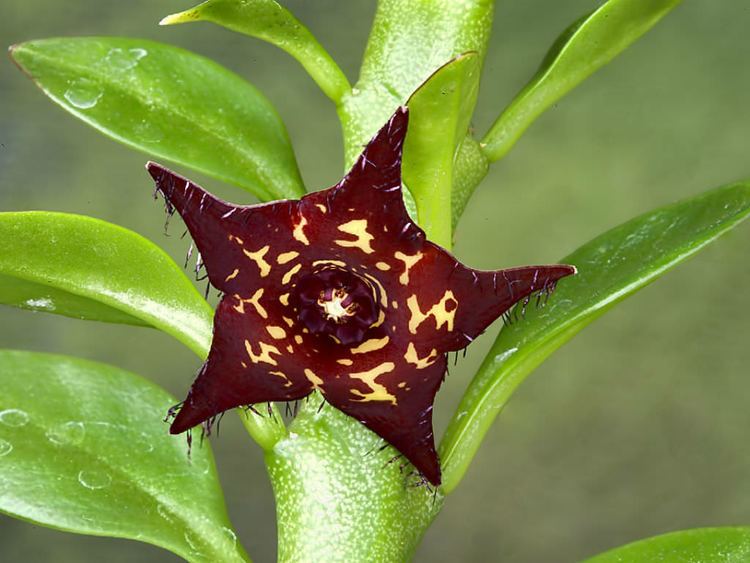 | ||
Similar Stapelianthus, Orbeanthus, Rhytidocaulon, Echidnopsis, Stapeliopsis | ||
Liam frerea schaka remix
Frerea is a plant genus which contains only one species, Frerea indica (locally called Shindel Makudi), a small succulent native to the Junnar hill forest in the Western Ghats in Maharashtra state in India. It is also grown as a greenhouse plant by succulent plant enthusiasts. At one time, it was on the IUCN list of twelve most endangered species on earth, but conservation efforts have brought it back from the brink of extinction.
Contents
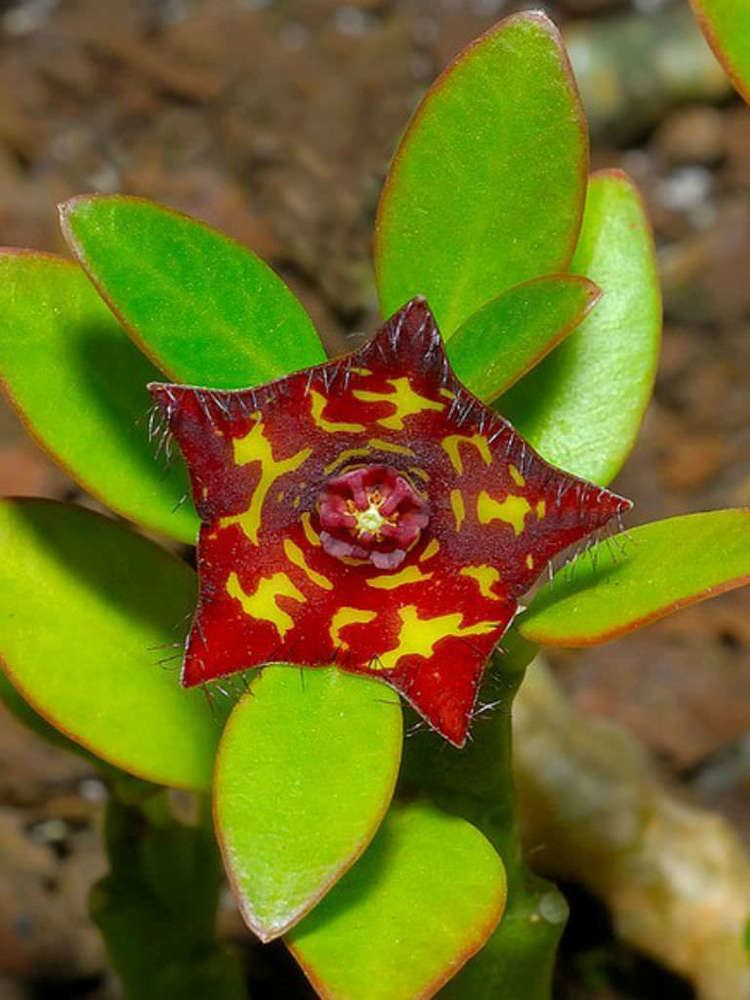
Description
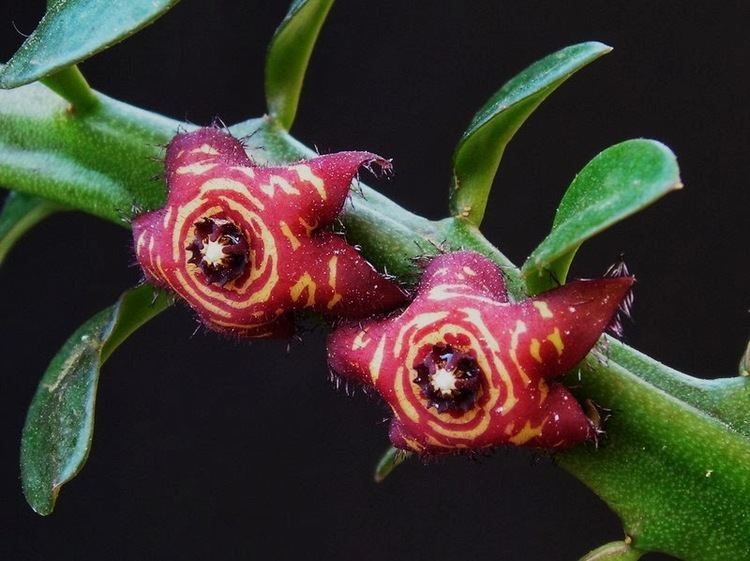
Frerea indica is a fleshy perennial succulent with 50 cm (20 in) long branches that have elliptic-oblong leaves that are 7 cm (2.8 in) long. The leaves grow during the monsoon season—in a habit that is unusual compared to its close relatives, it drops the leaves during dry seasons to conserve moisture. The crimson to cherry-red flowers are star shaped with yellow markings and have a 2 to 3 cm (0.79 to 1.18 in) corolla, with patterns of markings that vary from one population to another. It blooms from August to September.
Taxonomy
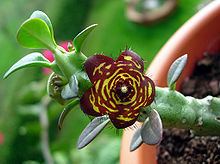
The plant was described in 1865 by Nicol A. Dalzell, who dedicated the new genus to Henry Bartle Frere, Governor of Bombay at that time.
Distribution and habitat
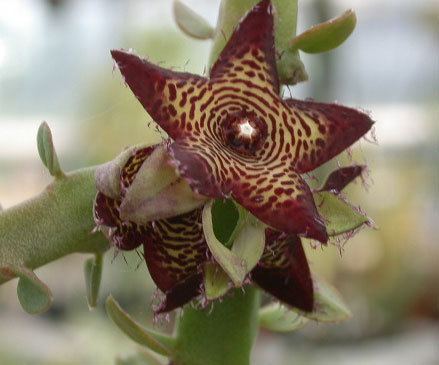
F. indica is known only in six areas in Maharashtra state in west India, growing at elevations between 750 to 1,347 m (2,461 to 4,419 ft), preferring crevices on cliffs. There are only a few plants in each of the six populations.
Conservation
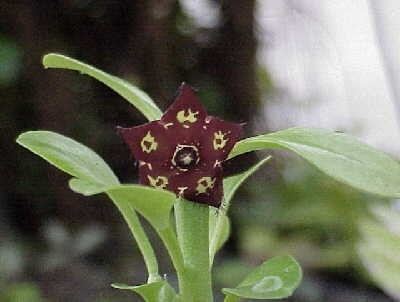
At one time Frerea indica was on the IUCN list of the twelve most endangered species in the world. Propagation by government and private agencies in India have created a larger and more stable greenhouse population. A study by the Botanical Survey of India in 2010 concluded that the plant is no longer endangered—they stated in June, 2010, that they will propose to the IUCN that the plant be removed from the IUCN list of endangered species. Groups that have propagated the plant in larger numbers include: the Botanical Survey of India (BSI, Pune); the Naoroji Godrej Centre for Plant Research (NGCPR, Shindewadi), Satara district, Maharashtra; the Botanic Garden of the National Botanical Research Institute (NBRI, Lucknow).
The plant's natural pollinators are believed to have all gone extinct, leaving it unable to set fruit in its native habitat. The wild population is further threatened by overgrazing, landslides, fire, and insects. There are also reports that locals eat the succulent stems. Greenhouse plants are pollinated using ants and flies, which are attracted to a foul-smelling secretion from the flower. Fruit setting and germination of seeds are now common in greenhouse conditions. The plant is also easily propagated from cuttings. F. indica is still classified as Endangered by the IUCN Red List.
Uses
F. indica is a distinctive greenhouse plant in temperate climates, and is grown by succulent plant collectors. There are several hybrids between F. indica and Caralluma species.
